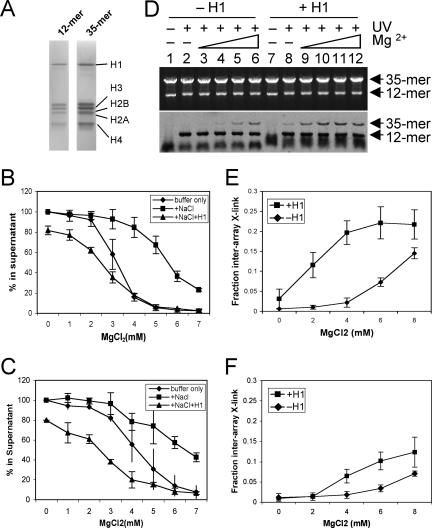FIG. 6.
H1 association enhances interarray interactions by unmodified but not mutated H3 tail domains. (A) H1 was incubated with 12-mer-35-mer array mixtures, and then proteins were analyzed by SDS-PAGE. The effects of 50 mM NaCl and H1 on MgCl2-induced self-association of arrays containing native histones and H3 6K→Q are shown in panels B and C, respectively. Self-association was assayed as in Fig. 2B, in standard low-salt buffer, buffer plus 50 mM NaCl, and buffer plus NaCl and H1, and is plotted as diamonds, squares, and triangles, respectively, versus MgCl2 concentration. (D) Effect of H1 on interarray cross-linking (X-link). Arrays containing native histones were incubated in the absence (lanes 1 to 6) or presence (lanes 7 to 12) of H1 and assayed for interarray H3 tail-DNA cross-linking. Experimental conditions and data analysis were as described in the legend to Fig. 3, except all samples contained 50 mM NaCl to facilitate H1 binding. (E and F) Quantification of interarray cross-linking. Cross-linking data as in panel D were quantified and plotted for native arrays (E) and arrays containing H3 6K→Q (F) versus MgCl2 concentration in the absence (diamonds) and presence (squares) of H1.

